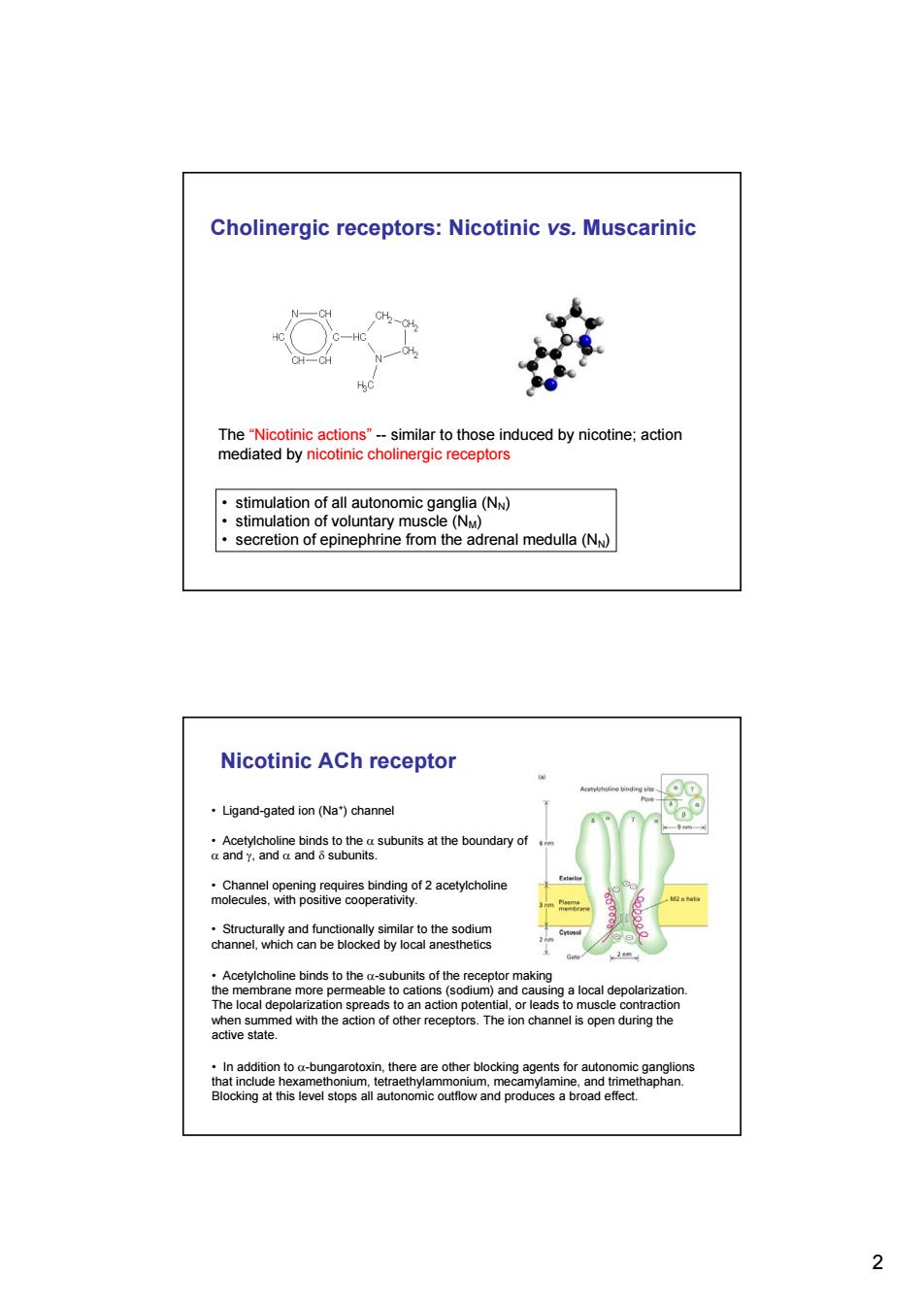正在加载图片...

Cholinergic receptors:Nicotinic vs.Muscarinic CH2-CH2 CH-0 The"Nicotinic actions"--similar to those induced by nicotine;action mediated by nicotinic cholinergic receptors stimulation of all autonomic ganglia(NN) stimulation of voluntary muscle (NM) secretion of epinephrine from the adrenal medulla(NN) Nicotinic ACh receptor Ligand-gated ion(Na)channel Acetylcholine binds to the a subunits at the boundary of a and y,and a and subunits. .Channel opening requires binding of 2 acetylcholine Exterior molecules,with positive cooperativity. Structurally and functionally similar to the sodium channel,which can be blocked by local anesthetics 28两 Acetylcholine binds to the a-subunits of the receptor making the membrane more permeable to cations(sodium)and causing a local depolarization. The local depolarization spreads to an action potential,or leads to muscle contraction when summed with the action of other receptors.The ion channel is open during the active state. In addition to a-bungarotoxin,there are other blocking agents for autonomic ganglions that include hexamethonium,tetraethylammonium,mecamylamine,and trimethaphan. Blocking at this level stops all autonomic outflow and produces a broad effect. 22 The “Nicotinic actions” -- similar to those induced by nicotine; action mediated by nicotinic cholinergic receptors • stimulation of all autonomic ganglia (NN) • stimulation of voluntary muscle (NM) • secretion of epinephrine from the adrenal medulla (NN) Cholinergic receptors: Nicotinic vs. Muscarinic Nicotinic ACh receptor • Ligand-gated ion (Na+) channel • Acetylcholine binds to the α subunits at the boundary of α and γ, and α and δ subunits. • Channel opening requires binding of 2 acetylcholine molecules, with positive cooperativity. • Structurally and functionally similar to the sodium channel, which can be blocked by local anesthetics • Acetylcholine binds to the α-subunits of the receptor making the membrane more permeable to cations (sodium) and causing a local depolarization. The local depolarization spreads to an action potential, or leads to muscle contraction when summed with the action of other receptors. The ion channel is open during the active state. • In addition to α-bungarotoxin, there are other blocking agents for autonomic ganglions that include hexamethonium, tetraethylammonium, mecamylamine, and trimethaphan. Blocking at this level stops all autonomic outflow and produces a broad effect